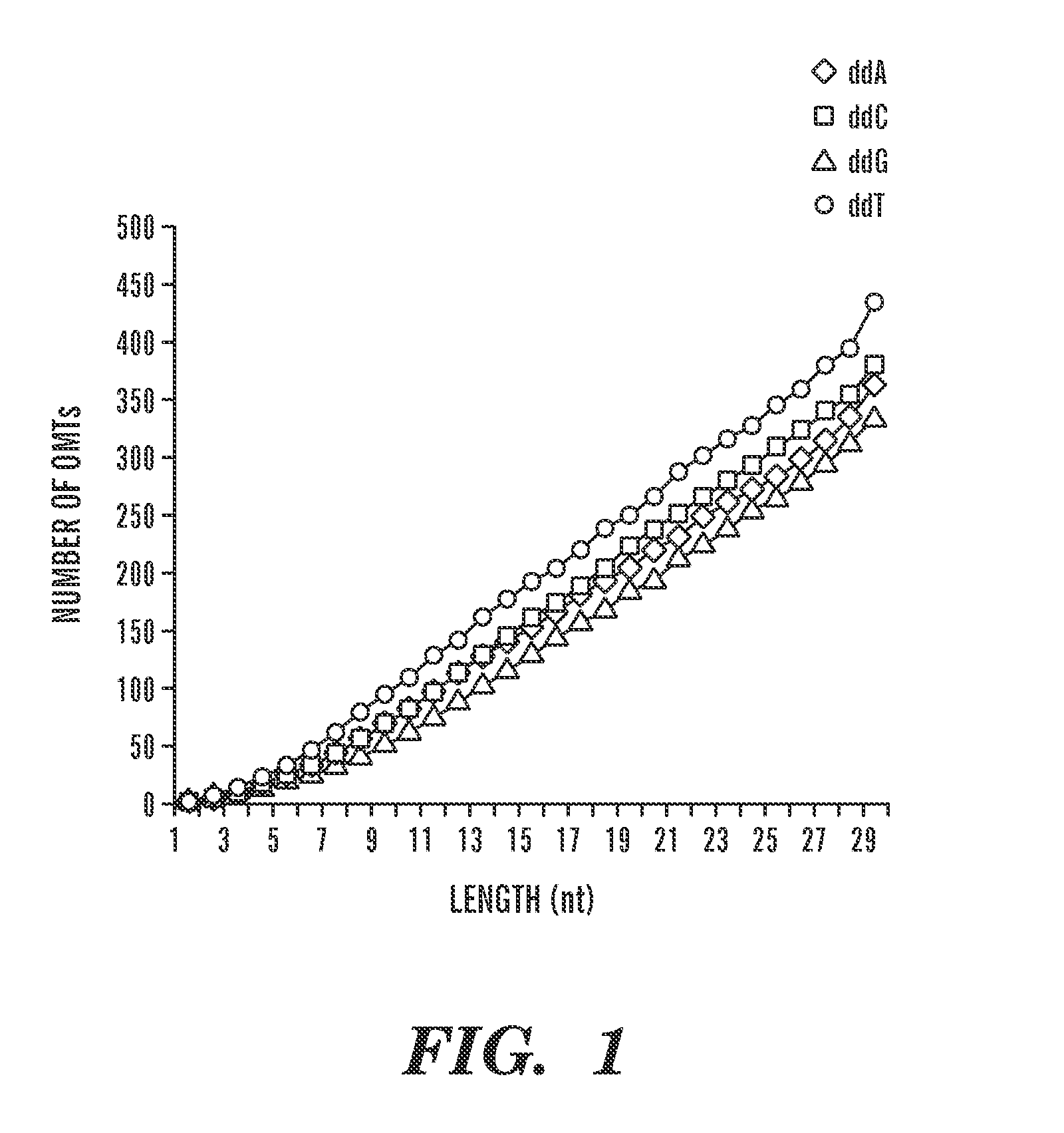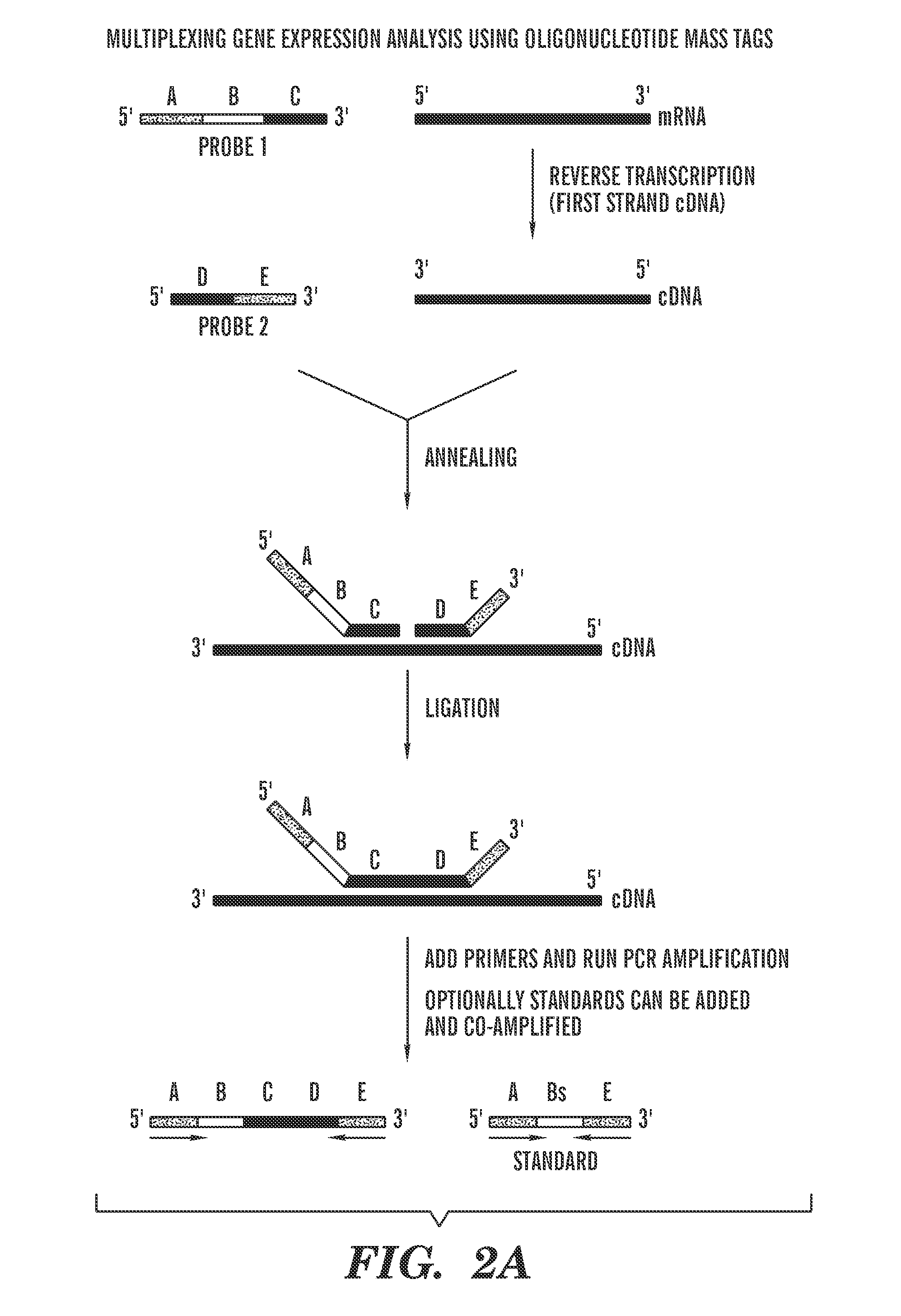Quantification of nucleic acids and proteins using oligonucleotide mass tags
a technology of oligonucleotide and nucleic acid, applied in the field of nucleic acids and proteins using oligonucleotide mass tags, can solve the problems of not being able to accurately represent the original rna population, requiring relatively high input levels of mrna that are often unavailable, and unable to detect and quantify multiple targets at the same time. , to achieve the effect of improving the ability to detect and quantify multiple targets at the same time,
- Summary
- Abstract
- Description
- Claims
- Application Information
AI Technical Summary
Benefits of technology
Problems solved by technology
Method used
Image
Examples
Embodiment Construction
[0039]The present invention discloses methods for measuring the amount of a target molecule, such as nucleic acid or protein, in a sample, or analyzing protein DNA binding specificities. This approach combines labeling using a target-specific probe, i.e., oligonucleotide mass tags (oligo massTags), simultaneous amplification (for example PCR, polymerase chain reaction) of the oligo massTags and standards, and primer extension, followed by mass spectrometric (MS) detection. As shown in the examples, slightly different procedures (i.e., modifications) are used for different applications, however, the general principle is the same. The method can be used for directly measuring copy numbers of target molecules in a sample, or comparing relative increase or decrease in the amount of the target molecules in different samples.
[0040]Accordingly, the method can be used for prognosis and diagnosis of diseases, wherein presence or absence of a molecule, such as nucleic acid with a particular s...
PUM
| Property | Measurement | Unit |
|---|---|---|
| mass difference | aaaaa | aaaaa |
| mass difference | aaaaa | aaaaa |
| temperature | aaaaa | aaaaa |
Abstract
Description
Claims
Application Information
 Login to View More
Login to View More - R&D
- Intellectual Property
- Life Sciences
- Materials
- Tech Scout
- Unparalleled Data Quality
- Higher Quality Content
- 60% Fewer Hallucinations
Browse by: Latest US Patents, China's latest patents, Technical Efficacy Thesaurus, Application Domain, Technology Topic, Popular Technical Reports.
© 2025 PatSnap. All rights reserved.Legal|Privacy policy|Modern Slavery Act Transparency Statement|Sitemap|About US| Contact US: help@patsnap.com



